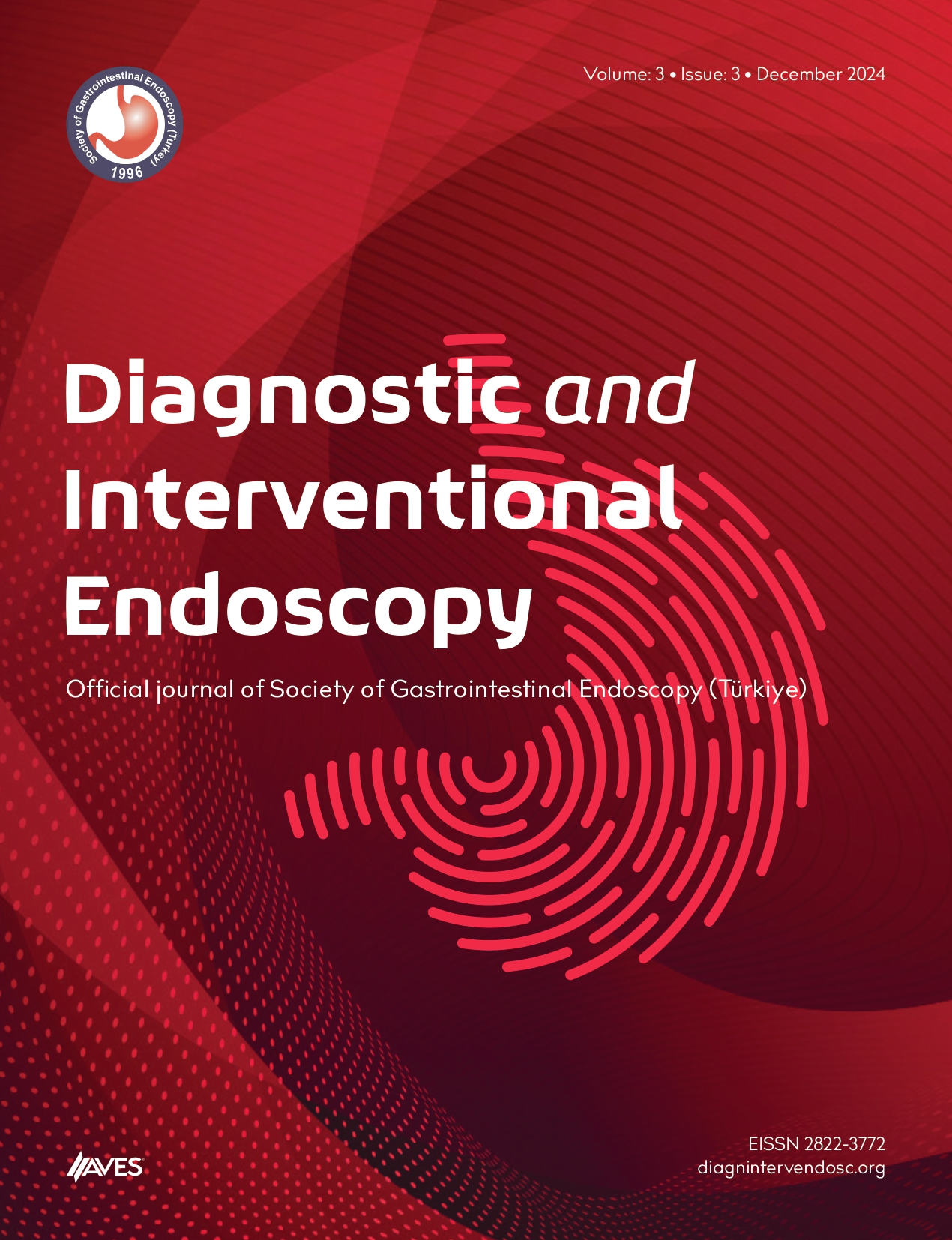Objective: Deep submucosal invasion (≥1000 mm) (T1b) alone is a low-risk condition for lymph node metastasis (LNM) in colorectal cancer (CRC). Nonoperative surveillance is considered to be a valid treatment modality in these patients. The aim of the present study was to report short-term follow-up results in patients with low-risk T1b CRC who opted out of primary endoscopic resection (ER).
Methods: Patients with CRC who underwent endoscopic submucosal dissection (ESD) between July 2019 and February 2023 and who were histopathologically classified as T1b were reviewed. Patients without lymphovascular involvement, poor differentiation, and grade 2-3 tumor budding are considered to be at low risk. Recurrence-free survival in patients with low-risk T1b CRC was the primary outcome.
Results: The study included 12 patients with low-risk T1b CRC. The majority of (83%) patients required endoscopic traction method. No serious adverse events associated with ESD were observed. The median submucosal invasion depth was 1850 µm (range, 1100-3000 µm). Eleven patients received nonoperative surveillance. No recurrence was observed during a median follow-up of 25.5 months (interquartile range: 12-53 months). One patient underwent subsequent surgical resection, but the surgical specimen showed no residual tumor or LNM.
Conclusion: In patients with low-risk T1b CRCs, nonoperative surveillance after ER was found to be promising in terms of short-term recurrence.
Cite this article as: Buyruk AA, Baki BE, Senkaya A. Is nonoperative surveillance after endoscopic resection an option in the treatment of low-risk T1b colorectal cancer? A tertiary-center experience. Diagn Interv Endosc. 2024;3(1):8-11.

.png)


.png)